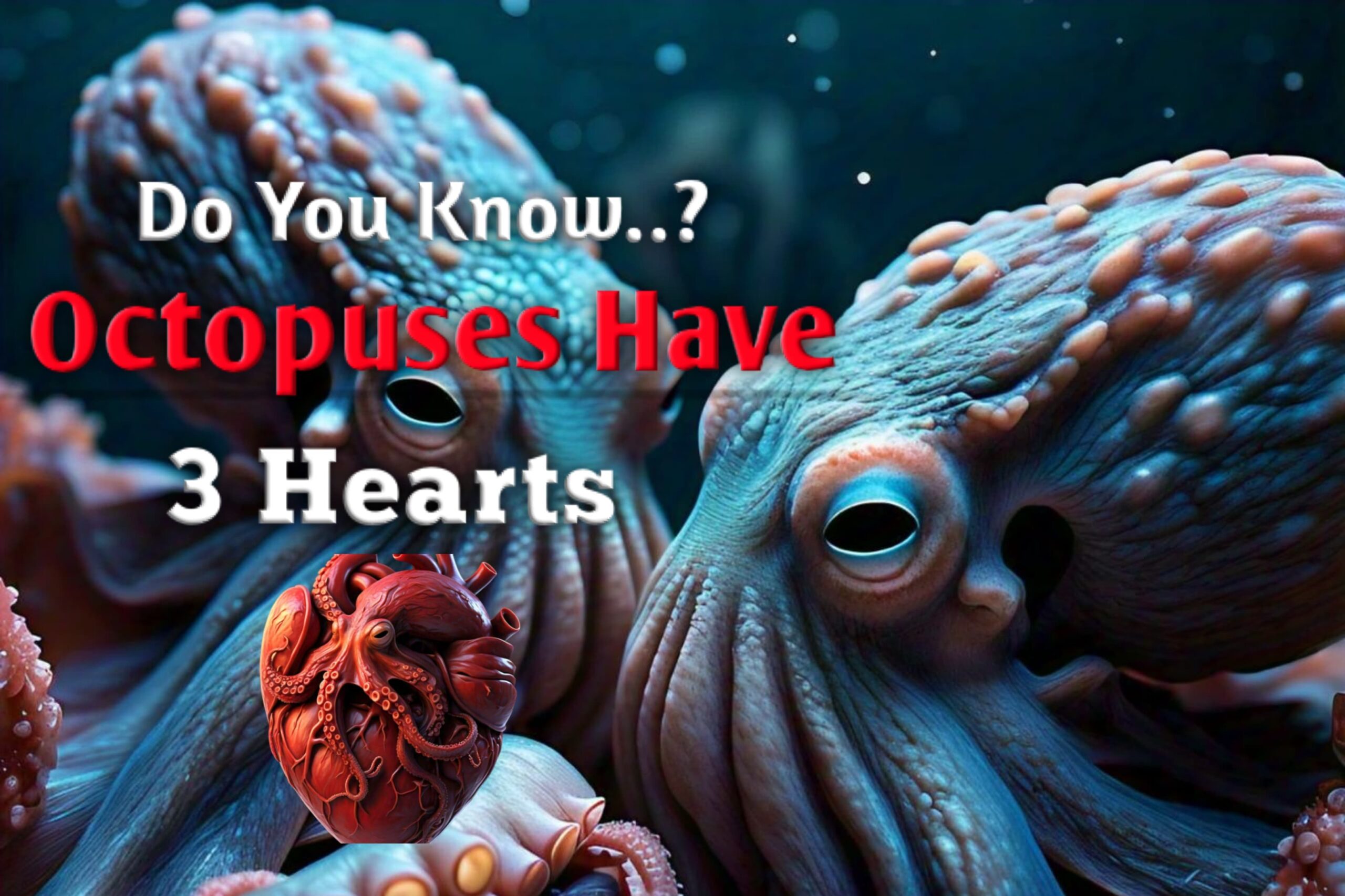written by :- Suyog Wankhade
Octopuses have three hearts, which is a unique and fascinating feature. Here are some interesting facts about octopus hearts:
1. Two branchial hearts: Two of the hearts are branchial hearts, which pump blood to the octopus’s gills, where oxygen is absorbed.
2. One systemic heart: The third heart is a systemic heart, which pumps blood to the rest of the octopus’s body, including its arms, digestive system, and other organs.
3. Efficient oxygenation: The three-heart system allows for efficient oxygenation of the octopus’s entire body, including its highly active arms.
4. Copper-based blood: Octopuses have copper-based blood (called hemocyanin), which is more efficient at transporting oxygen in cold, low-oxygen environments than human blood.
5. Heart rate: Octopuses can control their heart rate to conserve energy, slowing it down when they’re not active or when they’re stressed.
6. Independent arm movement: The systemic heart allows octopuses to move their arms independently, without needing to pump blood to their entire body.
7. Unique circulatory system: Octopuses have an open circulatory system, meaning that blood bathes their internal organs directly, rather than being confined to blood vessels.
These remarkable features allow octopuses to thrive in their underwater environment, making them one of the most fascinating creatures in the animal kingdom!







